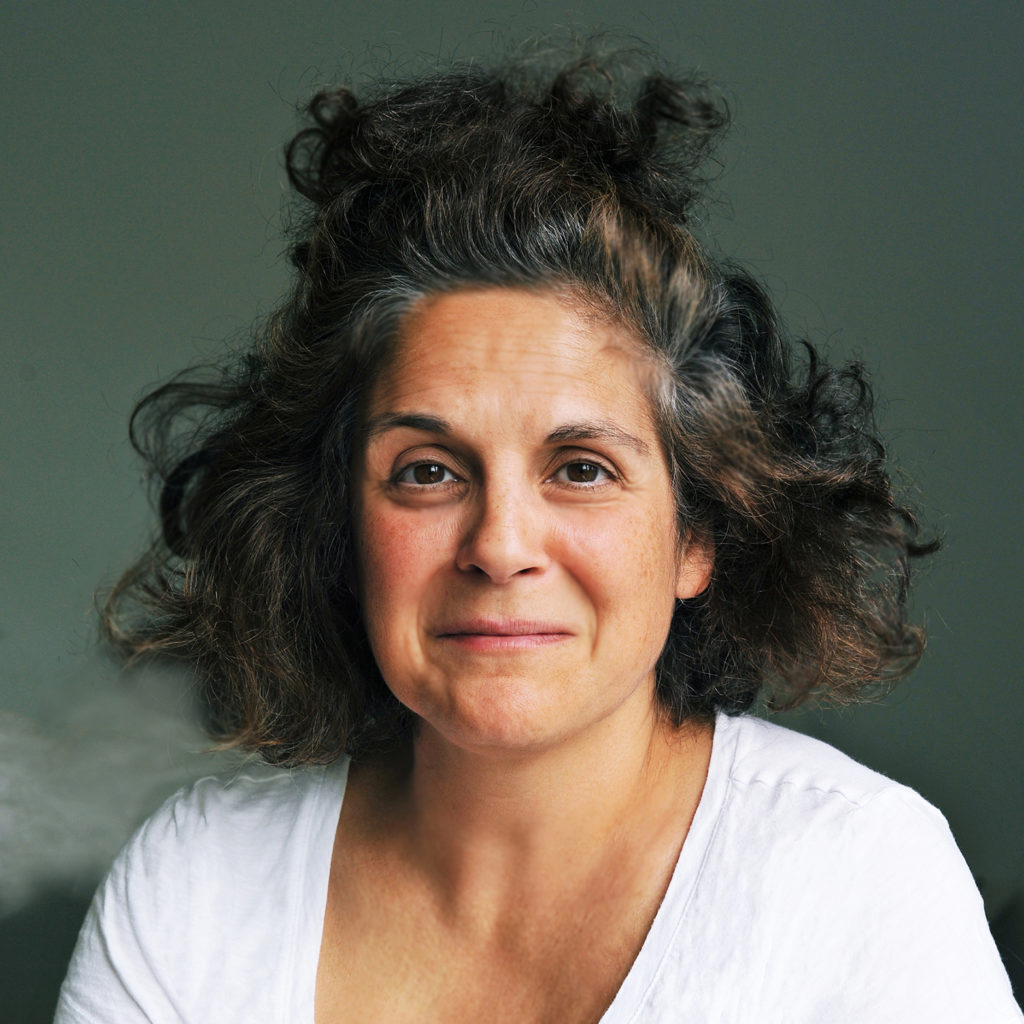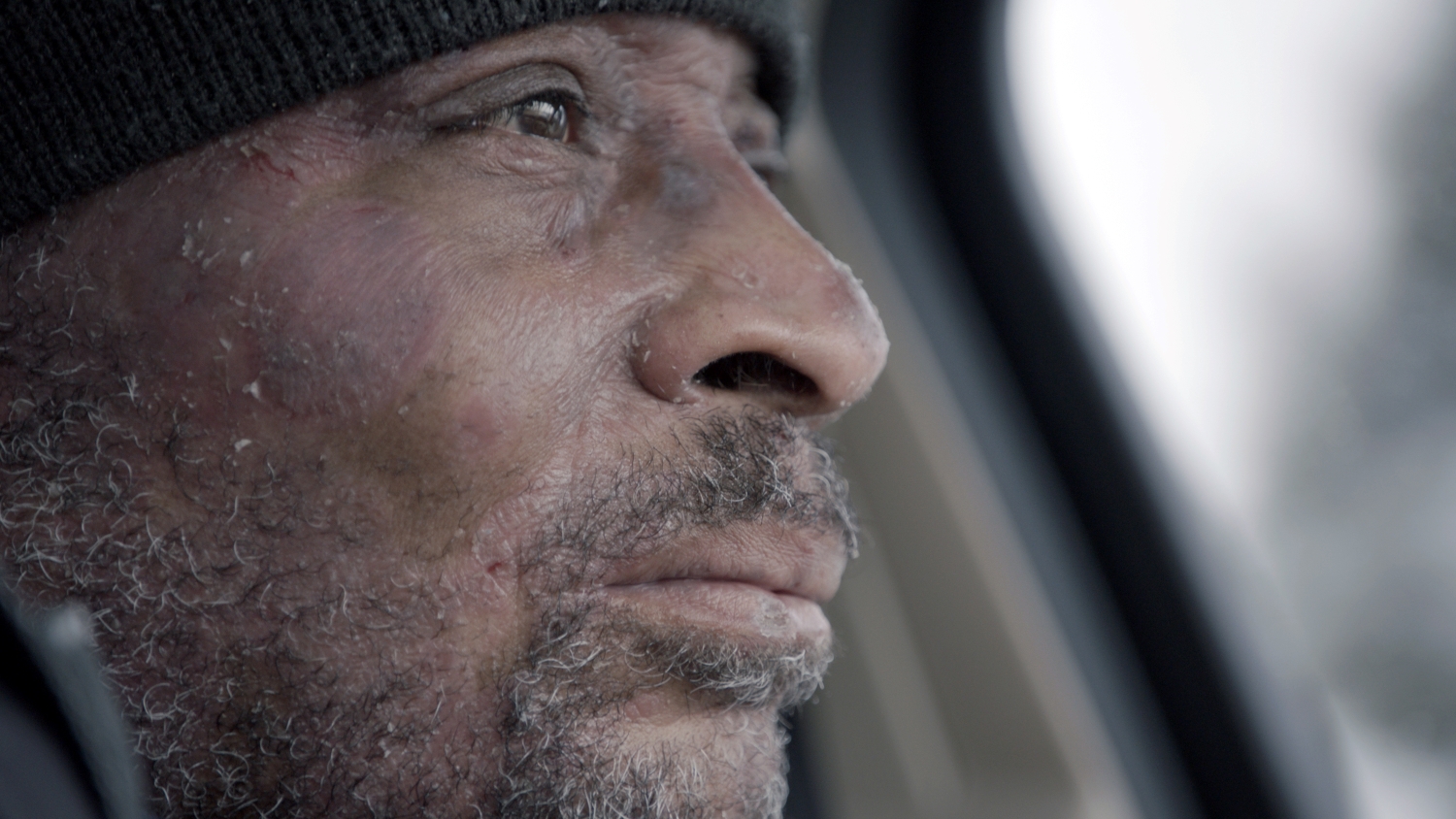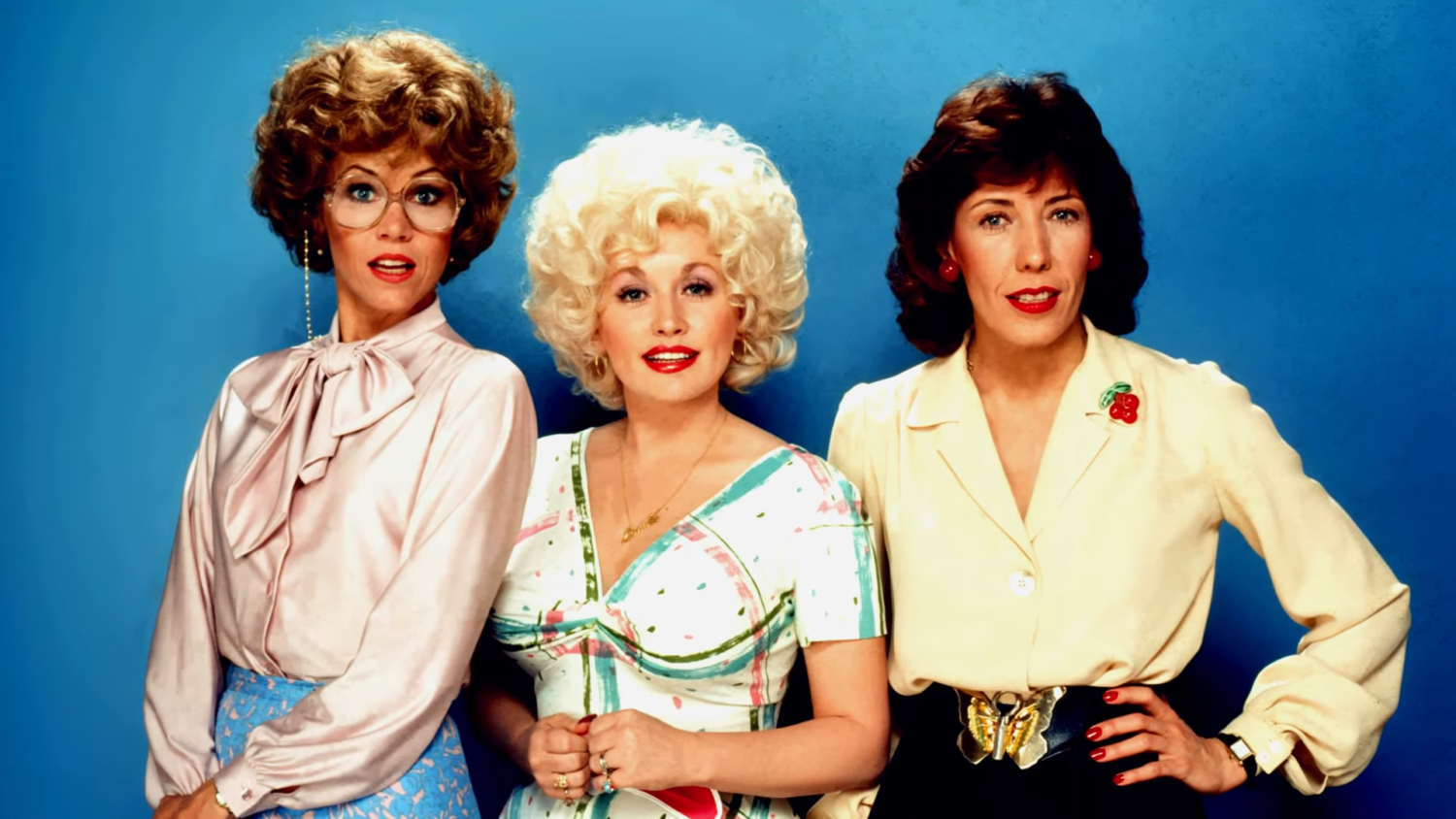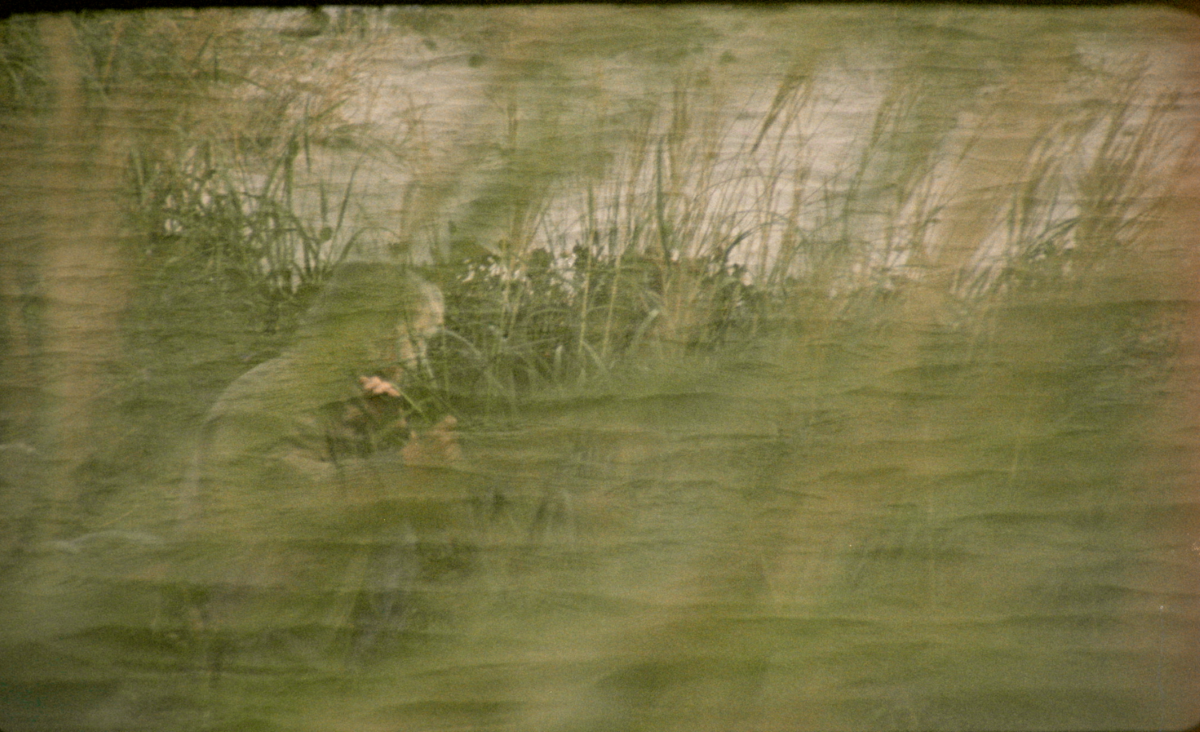“Sometimes the truth is shocking enough,” admits director Jennifer Baichwal, reflecting upon the style and scale of her film Into the Weeds, which opens Hot Docs this week, in comparison to her recent environmental trilogy of Anthropocene, Watermark, and Manufactured Landscapes, directed with Nick de Pencier and Edward Burtynsky. Where those films offer visual essays about the scope of climate change and the scars it leaves on the Earth’s landscapes, Into the Weeds tackles its sense of scale much differently. This time, a David versus Goliath story is at its core, as Baichwal observes working everyman Dewayne “Lee” Johnson as he sues the Monsanto corporation after an exposure to their herbicide Glyphosate led to a devastating battle with Non-Hodgkin’s lymphoma.
Where Anthropocene evokes the enormity of climate change visually and conceptually, Into the Weeds tackles Lee’s quest as he and his team of lawyers have to navigate against the sheer volume of information, bureaucracy, legal muscle, and institutional malfeasance created by the infamous corporation Monsanto. The significance of his case, moreover, echoes throughout the testimonials from other individuals who’ve developed cancer after using Monsanto (now Bayer) products like Ranger-Pro and Roundup. Montages of interviewees connect a range of perspectives united by the same cause. Interviewees edited in rapid-fire succession illustrate the extent of the herbicides’ impact on human lives as ordinary people find their years cut short while a corporation flourishes.
Into the Weeds still captures Baichwal’s sense of looking at a situation through lenses both macro and micro. The film zooms out of Johnson’s case with an eye for the landscapes, plants, animals, and non-human lives equally harmed by herbicides. From the food we eat to the bees that pollinate the plants, the film sees nearly every aspect of the industrialized world touched by the harmful products that will cut short Johnson’s life.
POV spoke with Baichwal via Zoom to discuss Into the Weeds, navigating the legal morass of Johnson’s story, and confronting the magnitude of all things in her body of work.

POV: Patrick Mullen
JB: Jennifer Baichwal
This interview has been edited for brevity and clarity.
POV: Congrats on garnering Hot Docs’ opening night. How does it feel to being the first to inaugurate the festival twice?
JB: It’s pretty exciting. We’re very honoured and I didn’t know that was the case. The first time with Act of God, it was a bit of a strange film to open the festival. Some people didn’t get it and this one is more straightforward, but we’re happy. It’s our hometown, our home festival, our peers. It feels like a great honour.
POV: It’s nice to give Lee’s story such a platform too. Whereabouts in the timeline of his case did the production for the film begin?
JB: We started before COVID. The whole thing began when Anthropocene went to Sundance, which was in the winter of 2019. At first, we weren’t sure about whether we were going to be following new ongoing trials [in the film] because two happened post-Lee. One was federal, one was state—the Pilliods and Edwin Hardeman—and they both were successful. But when we met Lee and talked to him, he was such a charismatic, humble, wonderful guy—just an everyman. He was doing his job and got screwed over and nobody helped him. But he knew he had to do that [go to trial} for everybody who came after him. They call it a “bellwether trial” in the States. It’s the first one and then, depending on how that goes, it ushers in thousands of people who have been injured. I just thought he was incredibly brave. We spent time with other plaintiffs, but he really was the guy. I just felt him.
POV: Did Lee emerge as the protagonist as you were filming or was the focus on him from the beginning?
JB: It was always about these trials, this particular herbicide, and how to tell that story comprehensively through the lens of Lee’s experience. It’s always crucial when going back and forth between detail and scale to have real human experiences, individual experiences, and then telescope out to bigger problems. I learned how ubiquitous Roundup is as an herbicide—it’s literally used everywhere all over the world, which was deeply alarming. I knew it was popular. I didn’t know it was that popular.
POV: The question of scale connects your films: visually through Manufactured Landscapes, Watermark, and Anthropocene, and even Long Time Running in terms of the scale of the Tragically Hip’s fandom. You often look at the micro/macro throughout your work. What is it about the “magnitude” of all things that drives your interest?
JB: I was fascinated by those questions when I was in university. I still think about them all the time. I left school and didn’t do a PhD was because I just got frustrated by the form of inquiry. It just felt too narrow. My joke is that three people read my thesis, so I was drawn to film as a way of exploring these issues. I’ve always been an environmentalist and that has become certainly more pronounced through our collaborations with Ed and as we’ve grown up and seen the state of the world that we are in right now.
Something that has always irritated me is when people force you to make a choice between social and environmental justice, as though those two things are separate. And as though those two things are competing, when in fact they are absolutely intertwined. In a story like this one, it’s one person’s experience, but it’s actually thousands and thousands of people’s experiences. And it’s not just people—it’s thousands of species’ experience. We’re talking about soil, plants, insects, animals, humans. When people talk about forever chemicals, like Teflon, to me, that magnitude is something we have to explore. We have to explore the big questions by connecting them back to individual experience—even the individual experience of a bee. I’m committed to trying to do that in some way. It really is about constructing an argument that looks at both sides.
POV: In constructing an argument with Lee’s story, you could have easily gone the route of anger, like we’ve seen in a lot of environmental films, especially as we get into the corporate malpractice and human rights factors. What guided you in terms of tone?
JB: This is a historical record in a sense. It is a true David versus Goliath story. We were meticulous in our research. There are no claims made in the film that are not made in court and backed up with evidence, and we used that as our conceptual philosophy and ethical philosophy. We’re not going to throw around huge accusations that are not provable or that are alarmist without being true. I have no interest in doing that.
POV: It really is fascinating when people detail the scope of the research.
JB: There was that too, but at the same time, when I think of the trial as a spine, it’s a compelling story. The Monsanto papers and the role of artificial intelligence and the problem of agency capture when you think that the agencies that are supposed to be protecting us are in fact being almost run by the companies that they are supposed to be regulating. People call it the revolving door. If you see the number of people who have worked for corporations and then gone on to government regulatory agency, most people would just assume that is a conflict of interest and it is not the case here. All of those things are both fascinating and terrifying and crucial. One of our lawyers in the film, Robin Greenwald, says she’s been fighting corporations her whole life as an environmental lawyer. She says, “These people talk to the EPA every day and you and I don’t.” We’re just ordinary people who are out in our gardens or on the golf course. All those golf courses are sprayed, or if you are playing in baseball diamond and fall on the grass. Why is it that we allow so much leeway to transnational corporations? They do what want until they get caught, rather than being forced to be prudent from the beginning.
POV: When you have a court case that’s ongoing—this could be going to the Supreme Court shortly—how do you decide where to go and how to navigate the systems?
JB: You have to choose a point and the point for us was when Lee’s trial ended. He is the bellwether and then the mass torts came behind him. I don’t think it’s a slam dunk victory at all, but they are removing Roundup from the residential market. The fact that glyphosate-based products will still be available, industrially and for agriculture, is bad, but there are a lot of farmers who are thinking about this too. If you are thinking about those repercussions, I don’t think the story will ever be over because we’ll always be dealing with industrial applications of harmful substances until the global apocalypse or the whole world gets together and bans pesticides outright.
POV: I was reading our interviews with you for Watermark and Anthropocene, and you talked about using images to inspire a sense of wonder that would let people understand their relationship in terms of the landscape and how they’re implicated in preserving it. How did you work to instill that sense of wonder within Into the Weeds?
JB: It’s a different film in that respect. The old modernist idea that form follows function, which I know is not popular anymore, is still something I believe in in terms of film. Form follows content and those large-scale meditative projects were very much about allowing all of us to recognize our own implication in these earth systems that are now human systems. In this case, what was absolutely crucial was not just the macro/micro, but getting the science and the arguments right and making them comprehensible to people. So it needs to be more didactic in some ways than our other films, but that was required in order to not get completely bogged down. If you think about it, a jury is made of ordinary people. It’s not made of career scientists who understand that language.
The wonder comes from a recognition of resilience and people who fight beyond for their own gain. Lee is not an extrovert. He’s a quiet person. He knew that it was important to speak out because of the magnitude of this problem.
POV: Is there much of a difference between making a film about an everyman character like Lee versus someone like Margaret Atwood or Gord Downie, who are comfortable and have a different sense of self-awareness with the camera?
JB: There absolutely is a difference with people who are famous. Gord was a different situation in that he had limited energy and he was doing a lot during that tour. We were very protective of that, as his whole team was, and making sure that he had enough energy. We did our long interview with Gord after the tour over a series of days in a very quiet place, and it was the right way to do that for him. Once he got into an environment where he wasn’t being interrupted, he was fine.
With Margaret Atwood, she’s so smart, and therefore intimidating, that you’re worried that you’re going to say something dumb or wrong and that she’ll correct you. I learned an enormous amount from being with her. She’s also generous and funny and kind. It is a different experience for sure. We interviewed a lot of other plaintiffs, who were just ordinary people who have been undergone the most horrendous health issues because of this herbicide, and you think “That’s just not fair.”
POV: The range of interviewees in the edit also gives the real good sense of the scale. And in terms of different dimensions, you did the Anthropocene as an installation in a museum when the film came out. What did working in that form teach you about feature filmmaking?
JB: Anthropocene was very much a situation of finding the best lens-based media to convey [what we wanted to say]. In some cases, it we did it three times or four times. We did it in the film. We did video installations. Ed took a photograph. And then we did artificial intelligence.
In this case, the biggest challenge was finding a way to make the linear trial comprehensible while it was moving along. It was a matter of trying to find out the essence of the trial. What are the most salient points, but at the same time, connecting back to profound human experiences and profound experiences of other species, and understanding scale by looking at these different ways in which this particular product is applied and affects systemic ecosystems.











